It might seem that we have seen this movie before. New tech companies seek to build their product on the backs of existing copyright owners, taking their work without permission or compensation. After a blizzard of lawsuits and perhaps some legislative reform, a new equilibrium emerges accommodating the new technology and protecting copyright owners.
But—as with so much involving artificial intelligence (AI)—this time is different. Generative AI has the potential to significantly increase the productivity and quality of creative human labor. AI-powered machines that will enable creators to generate high-quality content at dramatically lower costs are within reach. The creative workplace will never be the same.
In the face of this unprecedented challenge, copyright law cannot evolve to create a balanced outcome. Generative AI technology is not a means of mass reproduction and distribution of already-created content, rather content companies and the creators who work with or for them will use it to create genuinely new content.
As a result, the deeper and longer-term conflict involving generative AI does not pit technology companies against content owners; it pits the content owners against their own workers and suppliers. The contested terrain in this labor-management dispute lies outside the reach of copyright law. Copyright law has an important role to play in the coming transition, but a balanced solution must come from elsewhere.
AI companies are likely to prevail on their fair use defense
Copyright owners and organizations representing copyright owners including the New York Times and the Authors Guild have sued technology companies for using their works to train AI models without consent or compensation. The technology companies, including OpenAI and Anthropic, say their copying is fair use. Their application of this statutory defense against a charge of copyright infringement rests on the grounds that their copying is necessary to create a new product—a generative AI model—that does not compete with the copied material. The judge in the New York Times case recently rejected a motion to dismiss the infringement charges and, unless the parties settle, that case will at least proceed to trial and judgment.
While the outcome is far from certain, it seems reasonably clear that the AI companies have the better case. Tech companies do make intermediate copies of works for the purpose of creating a new product, a large language model (LLM), that can be used to generate output of the same general kind as the works that were used as input. But, except in the rare case of output that is substantially similar to one of the input works, the outputs of these models do not compete with the specific works copied by putting in circulation exact duplicates of them.
As I know from the Atlantic’s useful tool that searches through material used to train Meta’s AI, my book, “Regulating Digital Industries,” was uploaded to a pirate website and subsequently ingested in its entirety to help construct Meta’s Llama 3 model. Some people might steal my book from the pirate website and that is clearly infringement, but no one is going to Llama 3 to obtain my book rather than buying it online. In this respect, the market for my work has not been harmed by Meta’s development of this new tool, and the world now has a useful new piece of technology.
In this case, Meta might be vulnerable to a challenge that the company had not lawfully obtained the training data as it was downloaded from a pirate website, but when an AI company lawfully does obtain data freely available on the open internet, this objection would not apply. AI companies seem to be engaged in fair use in ingesting lawfully obtained copyrighted works to train their models, since the use is transformative and does not create copies of works that compete with the copyrighted works in the training data.
Of course, a court could determine that AI models more generally harm the market for copyrighted works of the same general type as the works used to train them. If people can use AI models to write books, then an author might use AI to write a different book on regulating digital industries and it might be superior to mine and take some sales from me. Or my next book on AI ethics and policy might have to compete against an author who used AI to generate a book on the same topic. Because this use of AI models might diminish the market for my current book and my hypothetical next book, the court could conclude that the nonconsensual and uncompensated use of my existing, published work to create AI models is not fair use. And the same argument would apply to any other copyrighted work. Legal scholar James Grimmelmann, for one, suggests that such an expansive ruling would be consistent with copyright law and policy.
But it seems to be highly unlikely that courts will go there. Copyright is aimed at preventing the mass reproduction and distribution of existing content to allow authors an economic reward from creating this content. It seems a stretch to say that copyright law extends to protecting existing books from competition with other books on the same topic or to preserve the market for future unwritten works, which may never exist.
Copyright transparency laws are premature, and might never be necessary
One implication of the unresolved nature of the fair use defense for using copyrighted material in training AI models is that the various transparency measures under consideration at the federal and state level are premature.
In April of 2024, then-Rep. Adam Shiff (D-Calif.) introduced H.R. 7913, the Generative AI Copyright Disclosure Act of 2024, which would require AI model developers to submit a notice to the Copyright Register containing a sufficiently detailed summary of any copyrighted works used to train their models. S. 5379, the Transparency and Responsibility for Artificial Intelligence Networks Act, introduced in November of 2024 by Sen. Peter Welch (D-Vt.), would have required AI model developers to disclose all their copyrighted works used to train an AI model to content companies. Both bills are likely to be reintroduced this year.
A bill introduced in the California legislature in February, and as amended by the Committee on Privacy and Consumer Protection in March 2025, would require developers of AI models to create an “approximate content fingerprint” for each work used in training, to let the content community know how to create fingerprints using the same technology and then to respond to identification requests using this technology.
The problem with these measures is that they presuppose that the fair use defense has failed. If training on copyrighted works without permission is fair use, then there is no purpose to these required disclosures. There would be no infringement and therefore no need for required disclosures to allow owners to pursue their copyright infringement claims. AI companies and copyright owners would have wasted substantial time and resources creating useless transparency systems.
It is possible to imagine other purposes for requiring transparency of training data, such as conducting bias audits, detecting privacy invasions, or assessing the likelihood that the output data will be factually accurate. But then the transparency requirement should be part of a larger requirement focusing on ensuring AI fairness, privacy, and accuracy, rather than a free-standing obligation.
AI companies’ fair use defense also might fail, but in that eventuality, Congress will want to establish a revised copyright regime to balance the needs of AI developers and content owners. This could take the form of a compulsory license as discussed in the Notice of Inquiry from the Copyright Office in 2023, an opt-out regime such as that under consideration in the U.K., or whatever legal changes (such as an antitrust exemption as suggested by the Authors Guild) that would be needed to enable content owners to form collective rights organizations to bargain with AI companies for comprehensive rights to use copyrighted content for AI training.
But even if the fair use defense fails and copyright owners want to assert their rights against AI companies, transparency measures might not be necessary. AI companies typically ingest everything they can get their hands on to train their models, so it would be reasonable for courts to adopt a rebuttable presumption that they copied specific works if these works were accessible online. As part of its copyright reform, Congress could adopt this rebuttable presumption of copying for AI training if a work appeared on the internet somewhere. An elaborate and expensive identification system might prove to be unnecessary for copyright owners to assert their rights.
A federal right of publicity
It is widely recognized that AI output that is substantially similar to existing copyrighted works would be infringing. For that reason, AI companies take pains to screen their output to ensure it does not duplicate existing works.
But the “substantially similar” standard does not protect authors and artists when an AI system generates output that mimics their identifiable style. This can be extraordinarily damaging to their livelihood, especially because competitors can use AI models to produce vast amounts of mimicking content. Commentators including law professor Benjamin Sobel have noted the difficulties in extending copyright-like protection to identifiable styles. Still, the threat to the livelihood of creators is so great that Congress should consider a federal right of publicity law, as suggested by the Authors Guild, that gives living content producers rights to control and be compensated for AI outputs that copy their recognizable style.
OpenAI has recognized the problem and is seeking to address it in the absence of such a law. It said its most recent image generation tool contains “a refusal which triggers when a user attempts to generate an image in the style of a living artist.” But this protective policy is weaker than it seems since it permits users to create images in “broader studio styles.” This has allowed a blizzard of imitations of the work produced by Studio Ghibli, the animation company headed by Japanese artist Hayao Miyazaki. It is as if OpenAI were willing to block requests for art in the style of Peter Paul Rubens but allow requests for art in the style of the workshop Rubens ran in Antwerp. This is a loophole legislation might have to consider closing.
Closely related to this issue is the need to constrain AI output that resembles the voice or appearance of an individual. Copyright does not currently give people control over this output, as the Copyright Office noted in its 2023 report on digital replicas. But S. 4875, the “NO FAKES Act” introduced last year by Sen. Chris Coons (D-Del.) and co-sponsored by a bipartisan group of senators, would create a new property right in a “computer-generated, highly realistic electronic representation that is readily identifiable as the voice or visual likeness of an individual.” Armed with this new digital right, separate from copyright, individuals may license or refuse to license their voice or likeness to other content creators, including large incumbent media companies.
Works generated with the help of AI deserve copyright protection
In the recently decided Thaler case, the U.S. Court of Appeals for the District of Columbia held that an AI model cannot be the author of a work for purposes of copyright. In addition, the Copyright Office has said, in the Allen case and in its report on copyrightability, that human authors cannot claim copyright protection for content they produce using AI models. If neither AI models nor human users of AI models can be authors of works for purposes of copyright, then these works are in the public domain.
The implications of this are extraordinary. Companies would lose a significant incentive to use AI to generate news reports, songs, scripts, images, videos, and other content. If they used more than a “de minimis” amount of AI to generate this output, then anyone could copy the material and redistribute it for free. Copyright’s incentive to the production of content would not apply to AI-generated works and there would be fewer such works produced.
In the face of these decisions, content companies might continue to register their works with the Copyright Office but disclaim whatever content is generated by AI. Movie companies can copyright a film that contains AI-generated special effects but not the AI portion of the film. However, this posture will inevitably limit the amount of AI-generated content that can be included in creative works.
If content companies are forced to disclaim anything more than “de minimis” AI content in their work, they will be left, at best, with nothing more than “thin” copyrights. For instance, they might try to show that the “selection, coordination, and arrangement” of non-copyrightable, AI-generated material is original enough to trigger copyrightability. This is what those seeking copyrights in compilations must show. But this would be to expose themselves to individualized and subjective assessment of copyrightability at the Copyright Office and the courts. It would be a weak and uncertain defense against mass copying and distribution, far less protective than a simple copyright in the AI material itself.
Copyright owners like music companies and book publishers might think that the lack of copyright protection for AI works will protect them against emerging commercial rivals who would use AI to create competitive songs and books. The problem of AI-generated knockoffs on Amazon and other book outlets would only get worse if they had copyright protection. Without copyright protection, these upstart rivals have much less incentive to use AI to generate competitive works because they themselves would reap only limited benefits from their work. Any popular AI output they generate would be immediately copied and distributed for nothing.
But this is a short-term perspective. In the long run, established content companies will want to use this technology themselves to generate high-quality content at a fraction of the current cost. They will need copyright protection for these works generated by creative authors using AI.
It is true that AI models do not need copyright protection as an incentive to produce content because they are inert machines incapable of doing anything absent prompts from people seeking to create attractive content. For that reason, copyright should not treat AI models as the authors of works; rather, it should recognize the humans who use sequences of prompts to generate original content as the true authors.
The Copyright Office thinks no sequence of prompts, no matter how sophisticated, is enough to allow copyright protection for AI-generated works, since the prompts themselves do not “determine” or “control” the output. But this seems to reflect a lack of comfort with the “black box” and probabilistic nature of generative AI systems, assimilating them to chance-driven machines like roulette wheels.
Others have come to terms with the reality of generative AI models. For instance, courses and workshops have been developed to teach skills in prompt engineering, and AI prompt marketplaces exist where it is possible to buy someone else’s prompt sequence and use it to generate the purchaser’s own works. If prompt sequences do not determine valuable AI output, as the Copyright Office thinks, these developments would not have taken place. Why bother to learn prompt engineering skills if these skills do not control AI output? Why spend money on prompt sequences if they do not determine AI output?
Moreover, despite the Copyright Office’s view that prompts are “instructions that convey unprotectible ideas,” they seem to qualify as a work of authorship worthy of copyright in the same way that any original computer code would. It would be odd indeed for copyright to subsist in AI prompts while denying it for the content produced using AI prompts.
The public interest is on the side of the vast potential for increasing human productivity in the arts and creative industries brought about by the advent of generative AI technology. Recognizing copyright when human authors use AI models to help them generate content is not a betrayal but a fulfillment of copyright’s fundamental purpose to promote progress in science and the useful arts.
The current legal view that works generated with the help of AI lack copyright protection is not a stable position. Sooner or later, the Copyright Office, the courts, or Congress will allow companies to protect AI-generated works from unauthorized copying.
My view is that copyright should be based on a work’s originality, not the method of its creation. However, a court in China has taken a different stance. It ruled that the user owns a copyright in an AI system’s output of an image when his use of the system through myriad prompts is sufficiently creative. A reasonable compromise in the U.S. might be to adopt a similar position, allowing copyright in AI-generated works when the prompt sequence shows sufficient human creativity.
The real challenge of AI-generated content is a changed role for human creativity
One unintended effect of denying copyright protection to AI works might be that content companies will have to maintain current levels of employment and compensation for today’s creative workers. If they cannot protect AI– generated works from mass copying, then these companies will not be able to use AI to generate the content they need. They will have to continue to employ large numbers of experienced creative workers at good salaries to generate their content.
But full employment and high salaries for content creators are not the purpose of copyright. The solution to the employment challenges of using AI in content industries must be found elsewhere.
AI-generated content is nowhere near as good today as the output of skilled journalists, scriptwriters, videographers, photographers, commercial designers, and other creative workers. But the AI technology is getting there. Content producers will soon be able to use AI systems to generate at least some content that used to be generated without any AI assistance. Prompt engineers will work together with traditional content creators to guide new systems of content production. The promise of the new technology is that this output will be satisfactory and maybe even superior for a wide variety of purposes at a fraction of the cost.
The Italian newspaper Il Foglio recently published a series of newspapers with content largely generated by AI. The content was not very good, and human writers had to check it for fabrications, but it showed that the handwriting is on the wall. In the future, journalists will be expected to use AI to help produce their stories.
As has been said about AI in radiology, AI will not replace creative workers, but creative workers who use AI will replace those who do not. The terms and conditions of new arrangements between content companies and content workers will not be dictated by copyright, but by the outcome of conflict on the contested terrain of workplace transformation.
The model for these future arrangements might be the contract negotiated in 2023 between the Writers Guild of America and the Hollywood studios. As last year’s Brookings study documented, the writers obtain substantial control over the conditions and compensation for their work, even when AI is involved. Under the contract, an AI model would never be considered the writer of a script, and writers would receive full pay and credit for reworking a first draft of a script generated by another worker using AI.
As the Brookings report also indicated, however, the bad news for workers seeking to imitate this success in other industries is that only 9.9% of the U.S. labor force is unionized and the percentage is even less in the creative industries where AI content generation is likely to have its largest effect.
Another Brookings study from last year suggests that generative AI will affect “cognitive” workers more than previous software innovation did. The effect might be felt first on lower-level knowledge workers in information industries. Junior content workers might never get the experience they need to move on to more highly paid and creative parts of the work, since it costs less to have an AI model perform these more routine tasks. But the effect of AI on creative work is likely to reach more advanced workers. As journalist John Burn-Murdoch points out, AI models might eventually get good enough that they could be used to produce his columns—or tech policy commentary like this!
Of course, all of this might be just overblown AI hype. We have encountered previous predictions of transformative AI, only to see these systems turn out to be either vaporware or, at best, mundane incremental improvements. But if so, then the experiment of having people use AI to generate content will fall of its own weight. Companies’ efforts to have their workers use AI will prove expensive, error-prone, and unreliable, ultimately leading to failure and abandonment.
If current expectations of transformative AI prove accurate, however, the challenges to the future of work and the place of human creativity in a radically altered workplace will be genuinely hard to manage. The U.S. does not have institutions, public or private, designed to oversee such a large-scale transition in the nature of creative work. Copyright will not help policymakers here to any significant degree. It is time to start the search for alternative public and private mechanisms that would help to ease the inevitable pain such a transition would bring and to allow this transformative technology to be used in a way that ultimately would benefit us all.
-
Acknowledgements and disclosures
Meta and Amazon are general, unrestricted donors to the Brookings Institution. The findings, interpretations, and conclusions posted in this piece are solely those of the authors and are not influenced by any donations.
The Brookings Institution is committed to quality, independence, and impact.
We are supported by a diverse array of funders. In line with our values and policies, each Brookings publication represents the sole views of its author(s).
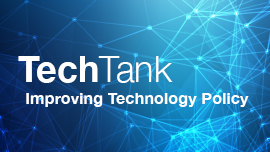
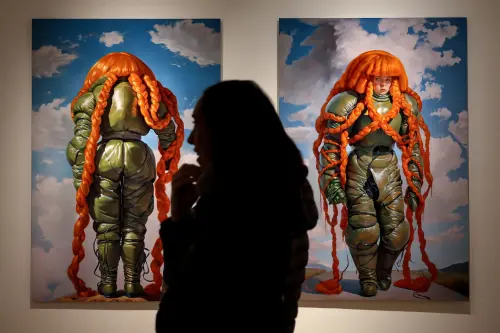

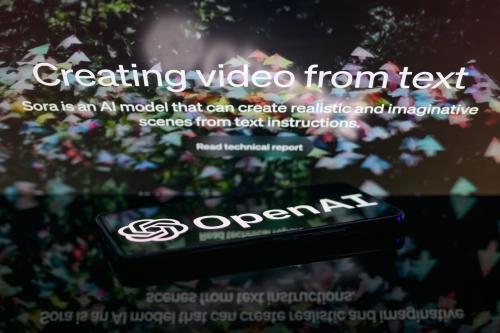

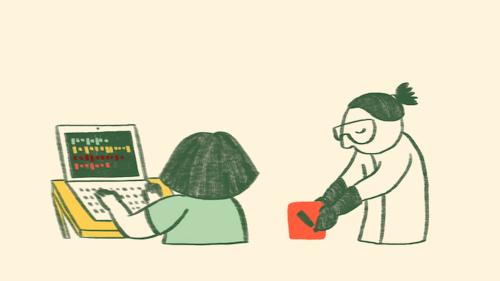
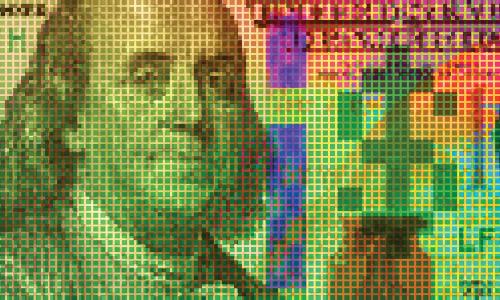
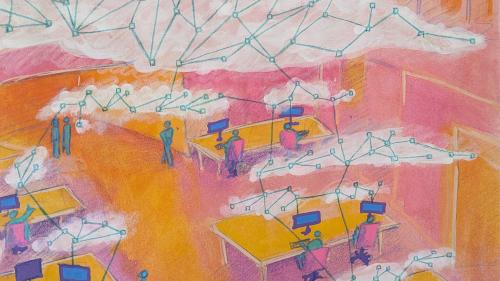
Commentary
Copyright alone cannot protect the future of creative work
May 1, 2025